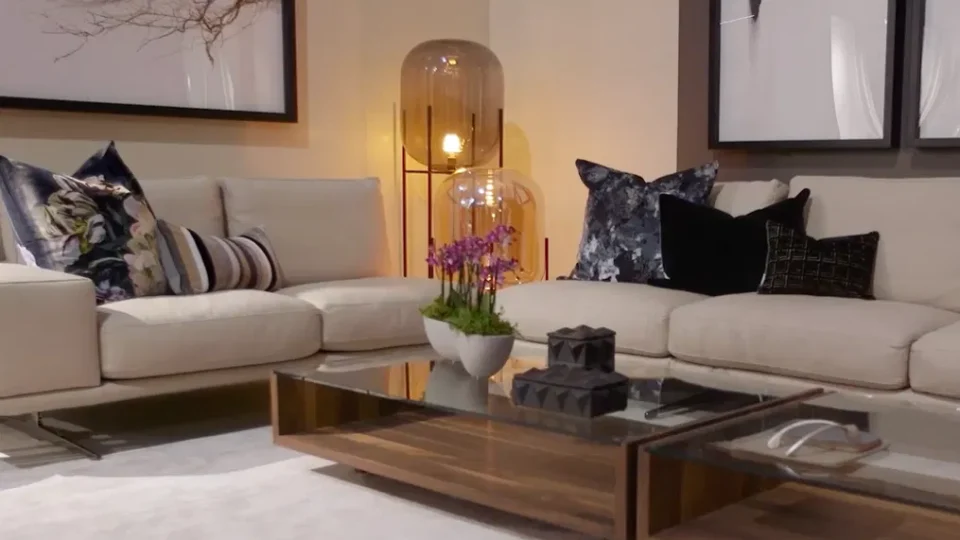When it comes to home improvement, homeowners often focus on updating outdated appliances, adding more storage, or expanding living spaces. While these changes are certainly valuable, they often overlook one critical aspect of renovation: design. The right design elements can transform a house into a home, creating an atmosphere that feels both functional and aesthetically pleasing. Unfortunately, many home improvement projects miss the mark when it comes to design essentials that are crucial to a cohesive, polished space. If you’re embarking on a home renovation or considering an update, ask yourself: Is your home improvement missing these design essentials?
1. A Thoughtful Color Scheme
One of the most fundamental yet often overlooked aspects of home design is the color scheme. While it may seem like a trivial consideration, the right palette can completely change the mood of a room. Whether you’re choosing neutral tones to create a calm, serene atmosphere or bold hues to evoke energy and excitement, your color choices should complement the room’s function and the overall style of your home.
A cohesive color scheme ties together the furniture, walls, flooring, and accessories, creating a unified look. Start by selecting a base color for the room, then build on it with accent colors that add dimension and personality. It’s important to remember that colors affect mood, so a carefully curated palette can enhance your daily experience in your home. For example, soft blues and greens can evoke a sense of tranquility in a bedroom, while warmer tones like terracotta or mustard yellow can bring warmth to a living room or kitchen. Don’t forget about the power of neutrals—white, gray, and beige are timeless choices that work well in virtually any space.
2. Proper Lighting
Lighting is one of the most impactful, yet often underestimated, elements of home design. It serves both functional and aesthetic purposes, and when done right, it can elevate a space. Different lighting styles—ambient, task, and accent—should be layered to create a dynamic, well-lit room.
Ambient lighting is the primary source of light, typically provided by ceiling lights or recessed lighting, and sets the tone for the space. Task lighting, such as under-cabinet lights in the kitchen or reading lamps in the living room, allows for specific activities to be performed safely and comfortably. Accent lighting, like track lights or wall sconces, highlights architectural features or artwork and adds depth to the design. By using different layers of lighting, you can create a room that’s as functional as it is atmospheric.
Another aspect to consider is natural light. Maximizing the use of windows and strategically placing mirrors can make a space feel larger and brighter. In rooms where natural light is limited, selecting light-colored walls and reflective surfaces can help bounce light around the room, making it feel more open and airy.
3. Texture and Material Variety
While color and lighting are essential to setting the tone of a room, texture and materials bring depth and dimension to the design. A room filled with just one type of material can feel flat and uninspired, but incorporating a variety of textures creates visual interest and a sense of warmth.
Consider mixing hard materials like wood, glass, and metal with softer ones like plush fabrics, velvet, or wool. This balance not only adds to the tactile experience of the room but also contributes to its overall aesthetic. For example, in a living room, a leather sofa paired with a soft, woven rug can create a balanced, inviting space. Similarly, combining matte finishes with glossy accents—such as matte black cabinets with polished chrome hardware—can add sophistication and refinement to a kitchen or bathroom.
Textures can also be used to evoke specific feelings in a room. Soft, luxurious fabrics in the bedroom invite relaxation, while sleek, clean lines and hard surfaces in a modern kitchen give the space a functional, streamlined feel. Mixing textures thoughtfully ensures that the room feels complete and layered.
4. Functionality Meets Design
Good design isn’t just about looks—it’s about function too. A beautiful space is one that serves its purpose well, and too often, the practical aspects of a room are sacrificed in favor of aesthetics. When considering home improvement, it’s crucial to design with functionality in mind.
For instance, when renovating a kitchen, it’s easy to get caught up in choosing the trendiest appliances and fixtures. However, it’s equally important to consider the kitchen layout—does it promote an efficient workflow? The concept of the kitchen work triangle (the optimal layout between the sink, stove, and refrigerator) is a time-tested principle that helps to maximize functionality. Similarly, ample counter space, sufficient storage, and easy-to-clean surfaces should always be prioritized.
In the living room, furniture should be arranged not just for visual appeal but for practicality as well. Creating distinct areas for conversation, reading, and entertainment makes the space feel inviting and organized, without sacrificing comfort. Similarly, in a home office, ergonomic furniture, proper lighting, and organized storage are essential for both productivity and well-being.
Design must also consider the needs of those who use the space. A bathroom should be designed for ease of use, with features like water-saving fixtures, well-placed mirrors, and ample storage for toiletries. For families with young children, safety features—such as rounded corners on furniture and non-slip rugs—should be integrated into the design without compromising style.
5. Balance and Proportion
A well-balanced room is one that feels harmonious and well-thought-out. Achieving balance in home design is about ensuring that no one element of the space overwhelms the others. The key is proportion—ensuring that furniture, decor, and architectural features are appropriately sized for the space.
For example, in a smaller room, large, bulky furniture can make the space feel cramped and uncomfortable. On the other hand, in a large, open room, smaller furniture pieces may feel lost and insignificant. Finding the right balance between scale and proportion creates a room that feels both comfortable and cohesive.
Symmetry is another important design principle. Whether you opt for a perfectly symmetrical arrangement or a more relaxed, asymmetrical balance, it’s important that elements within the room work together. For example, in a dining room, placing two identical chandeliers above a long table creates balance, while the artwork on the walls can be positioned so that the space feels even and cohesive.
6. Personalization and Unique Touches
Lastly, no home improvement project is truly complete without a few personal touches that reflect your style and personality. Customizing your space with items that speak to you—whether it’s through family heirlooms, art, or collectibles—adds warmth and authenticity.
Artwork is one of the most powerful ways to personalize a room. Whether it’s a statement piece above a fireplace or a gallery wall in the hallway, artwork injects character and can tie the color scheme and textures together. Additionally, thoughtfully curated accessories, such as unique throw pillows, vases, or lamps, help to further personalize the space, giving it a sense of life and individuality.
Incorporating personal elements into the design process ensures that your home feels like a true reflection of your tastes, rather than just a well-styled showpiece.
Conclusion
Home improvement is not just about upgrading appliances or adding square footage—it’s about creating a space that enhances your lifestyle and reflects your personality. Design essentials such as a cohesive color scheme, layered lighting, varied textures, and functional layouts contribute to a space that is not only visually appealing but also practical and comfortable. Paying attention to balance, proportion, and personal touches further enhances the experience, ensuring that your home improvement efforts are truly transformative.
If your home improvement strategy is missing these design essentials, it’s time to step back and reassess. A well-designed home not only looks better but also functions better, enhancing your quality of life and making your home a true sanctuary. As you move forward with renovations, keep these design principles in mind, and you’ll create a space that’s not only beautiful but also tailored to your needs.

